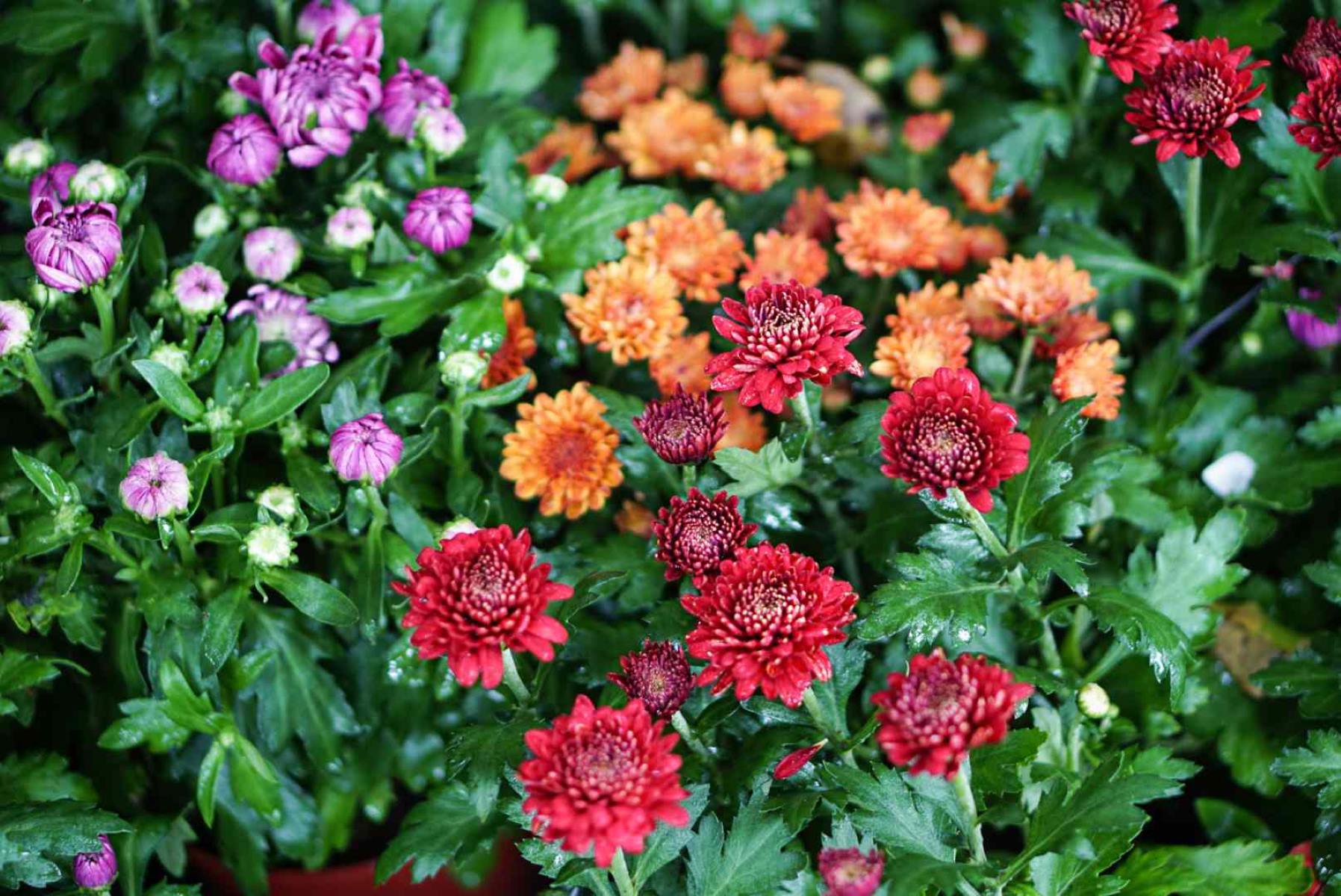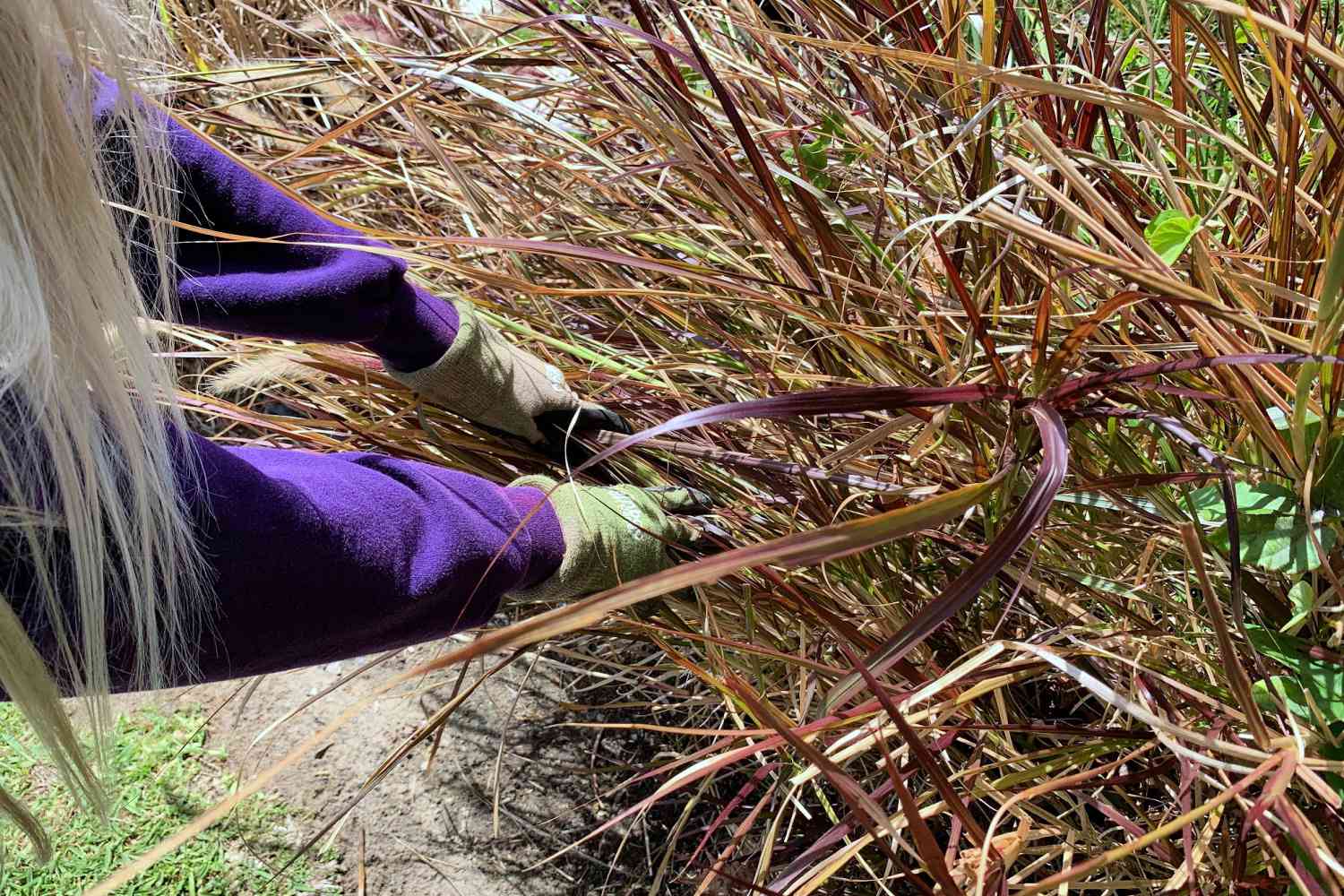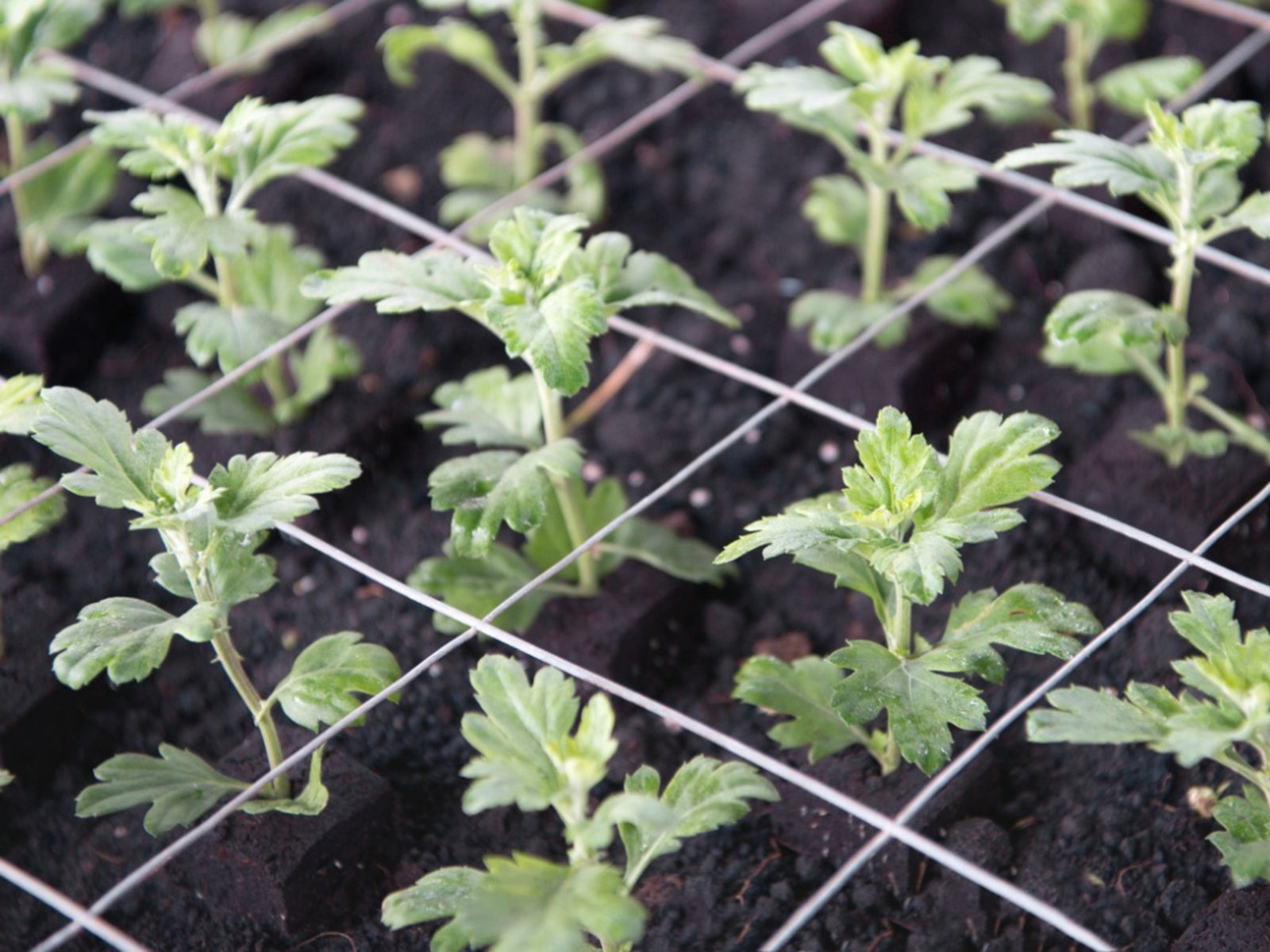Home>Gardening & Outdoor>Plant Care & Gardening Tips>How To Revive My Mums


Plant Care & Gardening Tips
How To Revive My Mums
Modified: March 5, 2024
Discover expert plant care and gardening tips on how to revive your mums and bring them back to life. Learn the best practices for nurturing and rejuvenating your mums.
(Many of the links in this article redirect to a specific reviewed product. Your purchase of these products through affiliate links helps to generate commission for Storables.com, at no extra cost. Learn more)
Introduction
Mums, scientifically known as Chrysanthemums, are beloved for their vibrant blooms and ability to thrive in various climates. These resilient perennials are a staple in many gardens, adding a burst of color and charm to outdoor spaces. However, like all living organisms, mums require proper care and attention to flourish. Whether you're a seasoned gardener or a novice plant enthusiast, understanding the essential techniques for reviving mums is crucial for ensuring their longevity and beauty.
In this comprehensive guide, we will delve into the fundamental aspects of nurturing and reviving mums. From assessing their current condition to implementing effective watering, sunlight exposure, pruning, fertilizing, and pest management strategies, we will explore the holistic approach to rejuvenating these delightful flowers. By gaining insight into the specific needs of mums and learning how to address common issues that may hinder their growth, you'll be equipped with the knowledge and skills to revive your mums and witness their resplendent resurgence.
So, let's embark on this horticultural journey and unlock the secrets to breathing new life into your mums. Whether your mums are showing signs of distress or you simply want to optimize their health and vibrancy, this guide will serve as your indispensable companion in nurturing these enchanting blooms. Get ready to immerse yourself in the art and science of reviving mums, and let's cultivate a flourishing garden together.
Key Takeaways:
- Reviving mums requires balanced watering, ample sunlight, and regular pruning. Understanding their needs and addressing pests and diseases are crucial for their vibrant resurgence.
- Assessing mums’ condition, providing proper care, and nurturing with love and dedication are key to witnessing their resplendent beauty in the garden.
Read more: How To Revive Dried Grass
Understanding the Needs of Mums
To effectively revive and nurture mums, it's imperative to comprehend their specific requirements. Mums thrive in well-drained soil with ample sunlight, typically needing at least six hours of direct sunlight daily. Understanding the significance of these factors is essential for creating an optimal environment for their growth.
Mums also require consistent watering, especially during dry spells, to maintain adequate moisture levels in the soil. However, it's crucial to avoid overwatering, as this can lead to root rot and other detrimental issues. Striking a balance in watering practices is key to sustaining the health and vitality of mums.
Furthermore, mums benefit from regular pruning to encourage new growth and enhance their overall appearance. By removing spent blooms and leggy stems, you can stimulate the development of fresh buds and maintain a compact, robust plant structure.
In addition to these fundamental needs, mums rely on proper air circulation to prevent the onset of diseases and fungal infections. Adequate spacing between plants and strategic placement in areas with good airflow can significantly contribute to their well-being.
Understanding the nutritional requirements of mums is equally important. These plants benefit from balanced fertilization, particularly during their active growth phases. Incorporating a slow-release fertilizer or organic compost into the soil can provide the essential nutrients needed for robust blooming and foliage development.
By comprehensively grasping the needs of mums, including their sunlight, water, pruning, air circulation, and nutrient requirements, you can lay a solid foundation for their revival and sustained vitality. This understanding forms the cornerstone of effective mum care and sets the stage for implementing targeted strategies to revive and nurture these captivating flowers.
Assessing the Current Condition of Mums
Before embarking on the journey to revive your mums, it's crucial to conduct a thorough assessment of their current condition. This initial step serves as the bedrock for devising a tailored plan to address any existing issues and optimize their overall health. By keenly observing the physical attributes and growth patterns of your mums, you can gain valuable insights into their specific needs and identify any potential challenges that may be impeding their vitality.
Begin by closely examining the foliage and blooms of your mums. Look for signs of discoloration, wilting, or abnormal spots on the leaves, as these can indicate underlying issues such as nutrient deficiencies, diseases, or pest infestations. Take note of the overall vibrancy and turgidity of the leaves, as healthy mums typically exhibit lush, green foliage that exudes vitality.
Next, assess the stem structure and growth habits of your mums. Check for any signs of legginess, stunted growth, or excessive branching, as these characteristics can provide valuable clues about the plant's vigor and development. Additionally, inspect the root system by gently loosening the soil around the base of the plant to evaluate the root health and ensure there are no signs of root rot or overcrowding.
Consider the environmental factors that may be impacting your mums, such as sunlight exposure, air circulation, and soil quality. Evaluate whether they are receiving adequate sunlight and if there are any obstructions that may be hindering their access to natural light. Assess the soil drainage and moisture levels to determine if adjustments are needed to create a more conducive growing environment for your mums.
Furthermore, take note of any pest activity or disease symptoms that may be affecting your mums. Look for common pests such as aphids, spider mites, or caterpillars, and be vigilant for indications of fungal infections or bacterial diseases. Identifying these potential threats is essential for implementing targeted pest management and disease control measures.
By meticulously assessing the current condition of your mums, you can gain a comprehensive understanding of their unique requirements and the specific challenges they may be facing. This insightful evaluation sets the stage for implementing tailored strategies to revive and nurture your mums, ultimately paving the way for their renewed vitality and resplendent beauty.
Providing Proper Watering and Sunlight
Proper watering and sunlight are pivotal factors in the successful revival and sustained well-being of mums. These elements play a fundamental role in ensuring the overall health, vigor, and blooming potential of these delightful flowers. Understanding the nuanced requirements of mums in relation to watering and sunlight is essential for creating an optimal growing environment that fosters their resilience and vitality.
Watering Practices: Mums thrive when provided with consistent and adequate moisture, particularly during their active growth phases. However, it's crucial to strike a balance and avoid overwatering, which can lead to waterlogged soil and root rot. To optimize watering practices, it's advisable to water mums deeply but infrequently, allowing the soil to dry out slightly between watering sessions. This approach encourages the development of robust root systems and helps prevent issues associated with water stagnation.
During periods of intense heat or prolonged dry spells, mums may require more frequent watering to maintain optimal moisture levels in the soil. It's important to monitor the soil moisture regularly and adjust the watering frequency based on environmental conditions and the specific needs of the plants. Applying water directly to the base of the plants, preferably in the morning to minimize evaporation, can help ensure efficient absorption and utilization by the mums.
Sunlight Exposure: Adequate sunlight is paramount for the flourishing of mums, as it fuels the process of photosynthesis and contributes to robust growth and prolific blooming. Mums typically thrive in locations that receive at least six hours of direct sunlight daily. When selecting a planting site for mums, it's essential to prioritize areas with ample sunlight exposure and minimal obstructions that may impede the plants' access to natural light.
In instances where the available sunlight may be limited, such as in shaded garden areas, it's important to assess the feasibility of enhancing the light exposure through strategic placement or selective pruning of surrounding foliage. By optimizing the sunlight exposure for mums, you can maximize their potential for vibrant blooms and healthy foliage, ultimately contributing to their overall rejuvenation and visual appeal.
By prioritizing proper watering practices and ensuring adequate sunlight exposure, you can lay a solid foundation for the successful revival and sustained vitality of your mums. These foundational elements, when thoughtfully integrated into your plant care routine, can significantly contribute to the resplendent resurgence of these charming flowers, allowing them to thrive and enchant with their captivating beauty.
Pruning and Trimming
Pruning and trimming are essential practices for maintaining the health, vigor, and aesthetic appeal of mums. By strategically removing spent blooms, leggy stems, and excess foliage, gardeners can stimulate new growth, enhance the plant's overall appearance, and prevent issues such as overcrowding and disease susceptibility.
When it comes to pruning mums, timing is crucial. Regular deadheading, which involves the removal of faded or spent flowers, is a key practice that encourages the development of new blooms and prolongs the flowering period. By promptly deadheading mums as soon as the blooms begin to fade, gardeners can redirect the plant's energy towards producing additional flowers, resulting in a more abundant and prolonged display of colorful blooms.
In addition to deadheading, selective pruning of mums can help maintain a compact and robust plant structure. This involves the careful removal of leggy or excessively long stems to promote a more balanced and bushy growth habit. By trimming back the stems to a desirable length, gardeners can prevent the mums from becoming overly tall and top-heavy, reducing the risk of flopping or bending under the weight of the blooms.
Furthermore, thinning out excess foliage can improve air circulation around the plants, reducing the likelihood of fungal diseases and pest infestations. By selectively removing overcrowded or diseased foliage, gardeners can create a healthier growing environment for the mums, allowing for better light penetration and airflow throughout the plant.
It's important to use sharp, clean pruning shears when performing any pruning or trimming tasks to minimize the risk of damage or infection to the plants. Additionally, disinfecting the pruning tools between cuts, especially when dealing with diseased plants, can help prevent the spread of pathogens and ensure the overall health of the mums.
By incorporating regular deadheading, selective pruning, and foliage thinning into the care routine, gardeners can effectively revitalize and maintain the vigor of their mums. These practices not only contribute to the visual appeal of the plants but also play a crucial role in promoting their overall health and longevity, allowing them to thrive and flourish in the garden landscape.
Read more: Why Are My Mums Wilting
Fertilizing and Nutrient Management
Fertilizing and nutrient management are integral components of nurturing healthy and vibrant mums. These practices play a pivotal role in providing the essential elements that support robust growth, prolific blooming, and overall resilience in these delightful flowers. By understanding the specific nutritional requirements of mums and implementing targeted fertilization strategies, gardeners can effectively optimize the health and vitality of their plants, ultimately contributing to their rejuvenation and sustained beauty.
When it comes to fertilizing mums, a balanced approach is key. These plants benefit from a steady supply of essential nutrients, including nitrogen, phosphorus, and potassium, to support their growth and blooming cycles. Incorporating a slow-release fertilizer specifically formulated for flowering plants can provide a consistent source of nutrients over an extended period, promoting steady and sustained growth without the risk of overfeeding or nutrient imbalances.
Timing is crucial when applying fertilizer to mums. It's advisable to initiate fertilization in early spring, as the plants emerge from dormancy and enter their active growth phase. A light application of a well-balanced fertilizer, such as a 10-10-10 formulation, can kickstart the mums' growth and set the stage for robust blooming later in the season. Subsequent applications can be made every 4-6 weeks during the growing season, ensuring a continuous supply of nutrients to support the plants' development.
In addition to commercial fertilizers, organic alternatives such as compost and well-decomposed manure can serve as valuable sources of nutrients for mums. Incorporating organic matter into the soil not only enriches its fertility but also improves its structure and moisture retention capabilities, creating an optimal growing environment for the plants.
Furthermore, it's essential to monitor the mums' response to fertilization and adjust the feeding regimen based on their specific needs. Observing the foliage color, growth rate, and overall vigor of the plants can provide valuable insights into their nutrient requirements. If signs of nutrient deficiencies, such as yellowing leaves or stunted growth, are observed, supplemental fertilization may be warranted to address the plants' needs and promote their recovery.
By prioritizing proper fertilization and nutrient management, gardeners can provide mums with the foundational elements they need to thrive and flourish. These practices not only contribute to the plants' immediate well-being but also set the stage for their long-term vitality and resilience. By nourishing mums with the right balance of nutrients, gardeners can witness the resplendent resurgence of these charming flowers, as they bloom with vigor and enchant with their captivating beauty.
To revive your mums, trim off any dead or yellowing leaves, water them regularly, and fertilize with a balanced fertilizer every 4-6 weeks. Also, make sure they are getting enough sunlight.
Dealing with Pests and Diseases
Pests and diseases pose significant threats to the health and vitality of mums, potentially undermining their resilience and aesthetic appeal. Effectively addressing these challenges is crucial for ensuring the successful revival and sustained well-being of these delightful flowers. By implementing proactive pest management and disease control strategies, gardeners can safeguard their mums against potential threats and create a conducive environment for their flourishing.
Pest Management
Common pests that may afflict mums include aphids, spider mites, caterpillars, and thrips, among others. These pests can cause damage to the foliage, stunt growth, and compromise the overall health of the plants. To combat pest infestations, it's essential to adopt integrated pest management practices that minimize reliance on chemical interventions and prioritize environmentally friendly approaches.
Encouraging natural predators such as ladybugs and lacewings can help control aphid populations, reducing the need for chemical insecticides. Additionally, regularly inspecting the mums for signs of pest activity and promptly addressing any infestations can prevent the escalation of pest-related issues and minimize the impact on the plants.
Disease Control
Mums are susceptible to various fungal diseases, including powdery mildew, leaf spot, and rust, which can manifest as discolored or distorted foliage, affecting the overall aesthetic appeal of the plants. To mitigate the risk of fungal infections, it's crucial to promote good air circulation around the mums by spacing them appropriately and avoiding overcrowding. This helps reduce the humidity levels around the plants, creating an environment less conducive to fungal proliferation.
In cases where fungal diseases are detected, applying organic fungicides or neem oil can help suppress the spread of the pathogens and protect the mums from further damage. It's important to adhere to the recommended application rates and schedules for these treatments to ensure their effectiveness while minimizing potential adverse effects on beneficial organisms and the environment.
Read more: How To Make My Mums Bloom
Vigilance and Prevention
Regular monitoring and vigilance are paramount in preventing and addressing pest and disease issues in mums. By promptly identifying and addressing any signs of pest activity or disease symptoms, gardeners can intervene early and prevent the escalation of these issues. Additionally, practicing good sanitation by removing and disposing of any affected plant material can help prevent the spread of diseases and minimize the recurrence of pest infestations.
By integrating proactive pest management and disease control measures into the care routine, gardeners can fortify the mums against potential threats and create a resilient and thriving garden ecosystem. These practices not only contribute to the immediate well-being of the plants but also foster a sustainable and harmonious environment where mums can flourish and enchant with their vibrant blooms.
Conclusion
In conclusion, the journey to revive and nurture mums is a multifaceted endeavor that encompasses a deep understanding of their specific needs and the implementation of targeted care strategies. By delving into the fundamental aspects of mum care, including proper watering, sunlight exposure, pruning, fertilization, and pest management, gardeners can embark on a transformative horticultural journey that culminates in the resplendent resurgence of these charming flowers.
Understanding the nuanced requirements of mums, from their need for well-drained soil and ample sunlight to their preference for balanced fertilization and proactive pest management, forms the cornerstone of effective mum care. By prioritizing these foundational elements, gardeners can create an optimal growing environment that fosters the health, vitality, and blooming potential of mums, ultimately contributing to their rejuvenation and sustained beauty.
The process of assessing the current condition of mums serves as a crucial starting point, providing valuable insights into their unique needs and any potential challenges they may be facing. By keenly observing the physical attributes, growth patterns, and environmental factors impacting the mums, gardeners can tailor their care approach to address specific issues and optimize the plants' overall well-being.
Proper watering and sunlight exposure emerge as pivotal factors in the successful revival of mums, with balanced watering practices and adequate sunlight serving as catalysts for robust growth and prolific blooming. By integrating these essential elements into the care routine, gardeners can lay a solid foundation for the mums' resplendent resurgence, creating an environment where they can thrive and enchant with their captivating beauty.
Furthermore, the practices of pruning and trimming, coupled with strategic fertilization and proactive pest management, play instrumental roles in nurturing healthy and vibrant mums. By embracing these practices, gardeners can maintain the plants' vigor, aesthetic appeal, and resilience, fostering a garden landscape where mums bloom with exuberance and vitality.
In essence, the journey to revive mums is a harmonious blend of art and science, where the nurturing touch of the gardener intertwines with the innate resilience of these delightful flowers. By embracing the holistic approach to mum care and infusing it with passion and dedication, gardeners can witness the transformative power of nature as mums flourish and thrive, adorning the garden with their vibrant blooms and captivating allure.
Frequently Asked Questions about How To Revive My Mums
Was this page helpful?
At Storables.com, we guarantee accurate and reliable information. Our content, validated by Expert Board Contributors, is crafted following stringent Editorial Policies. We're committed to providing you with well-researched, expert-backed insights for all your informational needs.














0 thoughts on “How To Revive My Mums”